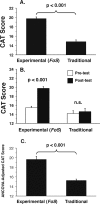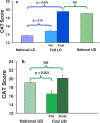Redesigning a General Education Science Course to Promote Critical Thinking
- PMID: 26231561
- PMCID: PMC4710388
- DOI: 10.1187/cbe.15-02-0032
Redesigning a General Education Science Course to Promote Critical Thinking
Abstract
Recent studies question the effectiveness of a traditional university curriculum in helping students improve their critical thinking and scientific literacy. We developed an introductory, general education (gen ed) science course to overcome both deficiencies. The course, titled Foundations of Science, differs from most gen ed science offerings in that it is interdisciplinary; emphasizes the nature of science along with, rather than primarily, the findings of science; incorporates case studies, such as the vaccine-autism controversy; teaches the basics of argumentation and logical fallacies; contrasts science with pseudoscience; and addresses psychological factors that might otherwise lead students to reject scientific ideas they find uncomfortable. Using a pretest versus posttest design, we show that students who completed the experimental course significantly improved their critical-thinking skills and were more willing to engage scientific theories the general public finds controversial (e.g., evolution), while students who completed a traditional gen ed science course did not. Our results demonstrate that a gen ed science course emphasizing the process and application of science rather than just scientific facts can lead to improved critical thinking and scientific literacy.
© 2015 M. P. Rowe, B. M. Gillespie, et al. CBE—Life Sciences Education © 2015 The American Society for Cell Biology. This article is distributed by The American Society for Cell Biology under license from the author(s). It is available to the public under an Attribution–Noncommercial–Share Alike 3.0 Unported Creative Commons License (http://creativecommons.org/licenses/by-nc-sa/3.0).
Figures



References
-
- Alberts B. A wakeup call for science faculty. Cell. 2005;123:739–741. - PubMed
-
- Alberts B. Redefining science education. Science. 2009;323:437. - PubMed
-
- Alters BJ, Nelson CE. Perspective: teaching evolution in higher education. Evolution. 2002;56:1891–1901. - PubMed
-
- American Association for the Advancement of Science (AAAS) Project 2061–Benchmarks for Science Literacy: A Tool for Curriculum Reform. Washington, DC: 1993.
Publication types
MeSH terms
LinkOut - more resources
Full Text Sources
Other Literature Sources

